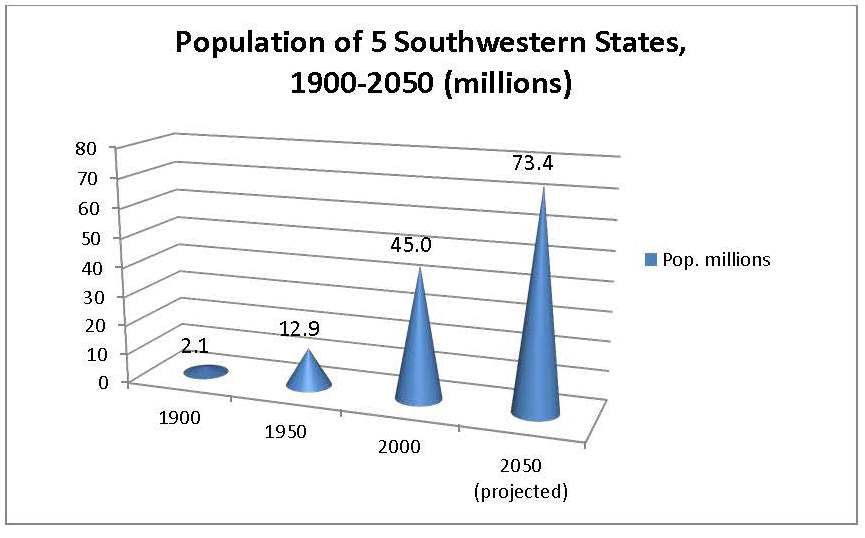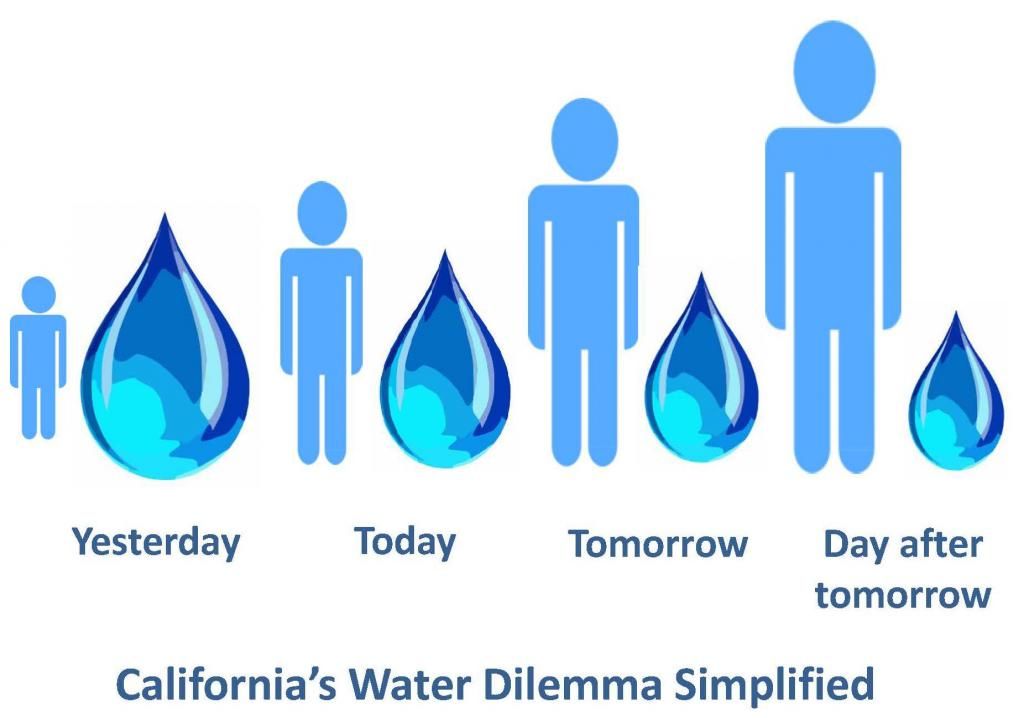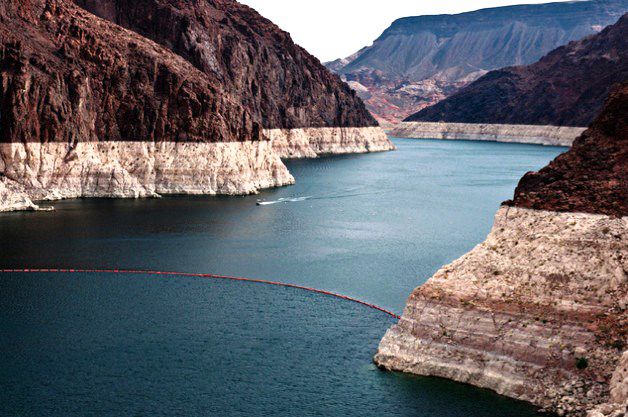Southwestern States Guzzling Groundwater till it’s Gone
Published on August 11th, 2014
UC Irvine and NASA’s Jet Propulsion Lab (JPL) scientists have published a new study in the journal Geophysical Research Letters that for the first time documents and quantifies the appalling depletion of groundwater in the Colorado River Basin.
|
|
|
Lake Meade and its now infamous “bathtub ring” of mineral deposits from a dropping water level due to surface water depletion. Groundwater depletion, however, is more pernicious: unseen and even larger. |
Some 40 million Americans and a number of large cities in the Southwest – including Los Angeles, San Diego, Las Vegas and Phoenix – to say nothing of irrigated agriculture in the region, depend on this vital resource. The Colorado Basin encompasses portions of California, Nevada, Arizona, New Mexico, Utah, Colorado and Wyoming.
Using data from NASA’s Gravity Recovery and Climate Experiment (GRACE) satellite to track changes in the mass of the Colorado River Basin, the research team found that it lost nearly 53 million acre-feet (16 cubic miles) of freshwater in the ten years from December 2004 to November 2013. This volume is almost double that of America’s largest reservoir, Nevada’s Lake Mead. Groundwater comprised more than 75 percent of the total water loss – about 41 million acre-feet (12 cubic miles).
During this same period, the parched Colorado basin has suffered through the worst drought in the last century. With surface water flows and withdrawals pinched by the drought, farmers and water districts have resorted to pumping ever greater quantities of groundwater to irrigate crops and slake the thirst of growing cities.
The problem with this strategy, according to Stephanie Castle, a water resources specialist at UC Irvine and the lead author of the new study, is that:
We don’t know exactly how much groundwater we have left, so we don’t know when we’re going to run out. This is a lot of water to lose. We thought that the picture could be pretty bad, but this was shocking.
Senior study author Jay Famiglietti, a UC Irvine earth systems science professor and water cycle scientist at JPL, adds that:
The Colorado River Basin is the water lifeline of the western United States. With Lake Mead at its lowest level ever, we wanted to explore whether the basin, like most other regions around the world, was relying on groundwater to make up for the limited surface-water supply. We found a surprisingly high and long-term reliance on groundwater to bridge the gap between supply and demand.
The rapid groundwater depletion rate will exacerbate declines in the flows of the Colorado River, because groundwater feeds surface water, and vice versa.
Famiglietti told NPR’s Renee Montagne what this water loss portends:
… a huge hit to agriculture, to food security, to the economy – not just that just of the Western United States but the nation, and it will have ripple effects around the world.
In the very near future, according to Famiglietti, if trends continue, the Colorado basin will not be able to meet deliveries to different states and cities. And then? “I think all hell is going to break loose,” he told NPR.
Scientists, if not craven politicians and business leaders, acknowledge that population growth, and not just drought and declining snowpacks, is one of the chief culprits behind this imminent threat to the well-being and economic survival of a region.
 Famiglietti told Montagne that the region needs a basin-wide groundwater management plan:
Famiglietti told Montagne that the region needs a basin-wide groundwater management plan:
We haven’t had to have these discussions before because the population hasn’t been as great and the need for food production haven’t been what they are today. But that era of abundance is over.
Every bit as important, if we are to have enough water, the Southwest and the country need a population stabilization plan. The bar chart shows just how dramatic and disastrous historic and projected exponential population growth is. Each resident of these millions is an additional consumer of water.
And the diagram below distills the essence of California’s water crisis:






